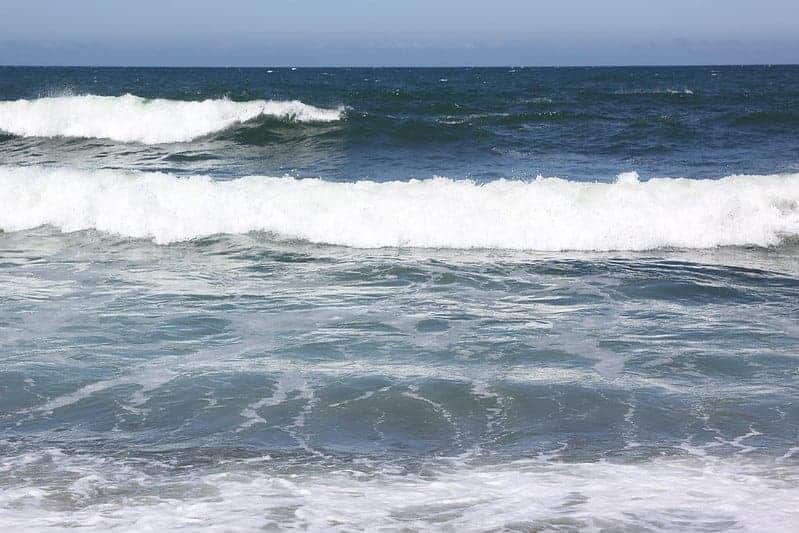The world’s oceans play a critical role in climate regulation, mitigation and adaptation and should be integrated into comprehensive “green new deal” proposals being promoted by elected officials and agency policymakers, a group of ocean scientists suggests in a new paper.
“The ‘green new deal’ has been the headline, but very few have been talking about the oceans in those conversations,” said Steven Dundas, an environmental and resource economist in Oregon State University’s College of Agricultural Sciences and the Coastal Oregon Marine Experiment Station in Newport, Oregon.
“We think it’s important to add a touch of ocean blue to this conversation because the oceans play an important role in efforts to mitigate effects of climate change,” he said. “Our proposed ‘teal deal’ is an integrated approach that is more likely to generate cost-effective and equitable solutions to this global threat.”
Dundas is one of three senior authors of the paper, which was published recently by the journal Conservation Letters. The other senior authors are Arielle Levine and Rebecca Lewison of San Diego State University. Additional authors include OSU’s Angee Doerr, Ana Spalding and Will White.
The scientists highlight four areas of investment commonly touted in “green new deal” proposals that also apply to the world’s oceans: energy, transportation, food security and habitat restoration.
“Adding the oceans to climate policy doesn’t mean you’re ignoring the terrestrial approaches to climate change mitigation,” Dundas said. “It means adopting a portfolio approach that includes both. We hope this paper and our recommendations broaden the policy options needed to meet the grand challenge of climate change.”
The concept of a green new deal emerged last year as a way to address climate change. International environmental leaders are now suggesting that coronavirus recovery plans present an opportunity to address climate change.
In the renewable energy sector, the ocean’s winds, waves and currents represent a significant source of clean energy that could reduce emissions, meet demand for electricity and spur economic growth through new industry. But many hurdles remain, since offshore energy projects are subject to a range of regulatory policies from the local to the national level, the researchers said.
In the transportation sector, 80% of merchandise around the globe is transported by sea, contributing about 3% of human-made emissions. Growth in world trade is predicted to increase emissions by 150 to 250% by 2050. But measures to address and improve maritime emissions reductions are largely absent from international efforts. Modifying hull designs, relying more on biofuels or wind power and other steps could reduce shipping emissions, the researchers suggested.
In the area of food security, marine fisheries remain one of the most sustainable sources of protein for human consumption, with a lower total carbon footprint than many land-based food sources.
As climate change impacts the size and distribution of marine resources, fishing communities are faced with a few options: following the fish, which could increase costs and emissions; finding an alternative livelihood, which is often not feasible; and switching to a new species, which also could come with increased costs and requires careful fisheries management, the researchers said.
Aquaculture – the term for commercially raising fish or growing seafood products – also holds potential for growth at a relatively low emissions cost, researchers said. For example, seaweed aquaculture could mitigate hundreds of tons of emissions each year.
“Properly executed aquaculture, paired with sustainable fisheries, has the potential to enhance the food supply, decrease the carbon footprint of protein sources and sequester carbon at the same time,” said Lewison.
In the area of habitat restoration, investment in projects that restore coastal habitats such as mangroves, tidal wetlands, kelp forests and seagrasses should be a key component of climate policy, the researchers suggest. These habitats currently store up to 25 billion metric tons of carbon, and further restoration could increase that storage capability.
Coastal habitat restoration also can increase flood and erosion protection and mitigate storm impacts, reducing the vulnerability of coastal populations to extreme weather impacts and reducing costs of disaster aid.
“Investing in these four sectors can benefit communities across the United States,” said Levine. “The impacts and the benefits go far beyond coastal communities.”
The researchers hope to use the paper and their argument to encourage policymakers to consider the oceans in “green new deal” proposals moving forward.


